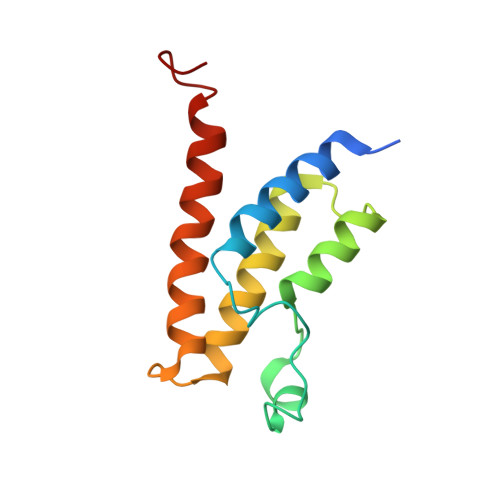Degradation of the BAF Complex Factor BRD9 by Heterobifunctional Ligands.
Remillard, D., Buckley, D.L., Paulk, J., Brien, G.L., Sonnett, M., Seo, H.S., Dastjerdi, S., Wuhr, M., Dhe-Paganon, S., Armstrong, S.A., Bradner, J.E.(2017) Angew Chem Int Ed Engl 56: 5738-5743
- PubMed: 28418626
- DOI: https://doi.org/10.1002/anie.201611281
- Primary Citation of Related Structures:
5TWX - PubMed Abstract:
The bromodomain-containing protein BRD9, a subunit of the human BAF (SWI/SNF) nucleosome remodeling complex, has emerged as an attractive therapeutic target in cancer. Despite the development of chemical probes targeting the BRD9 bromodomain, there is a limited understanding of BRD9 function beyond acetyl-lysine recognition. We have therefore created the first BRD9-directed chemical degraders, through iterative design and testing of heterobifunctional ligands that bridge the BRD9 bromodomain and the cereblon E3 ubiquitin ligase complex. Degraders of BRD9 exhibit markedly enhanced potency compared to parental ligands (10- to 100-fold). Parallel study of degraders with divergent BRD9-binding chemotypes in models of acute myeloid leukemia resolves bromodomain polypharmacology in this emerging drug class. Together, these findings reveal the tractability of non-BET bromodomain containing proteins to chemical degradation, and highlight lead compound dBRD9 as a tool for the study of BRD9.
Organizational Affiliation:
Department of Medical Oncology, Dana-Farber Cancer Institute, Boston, MA, USA.















